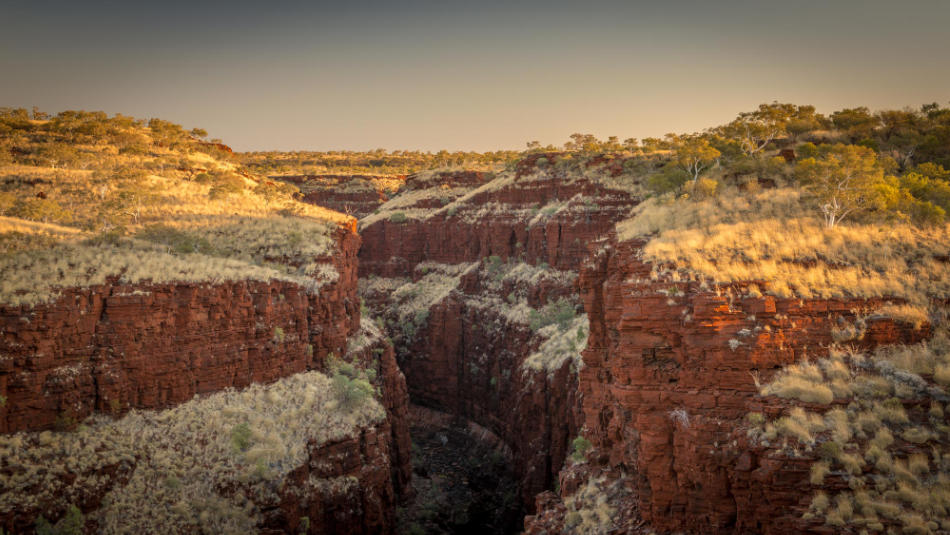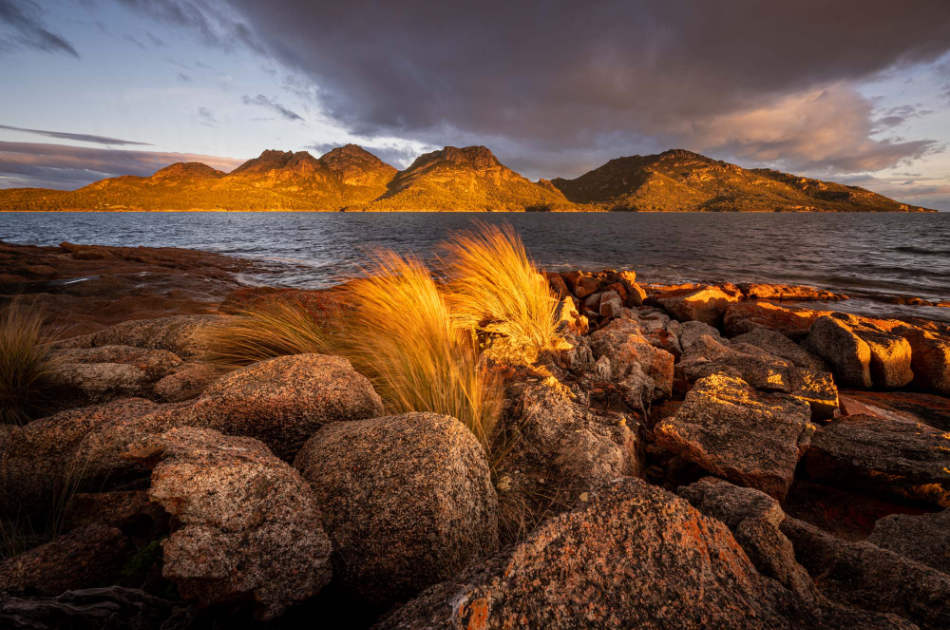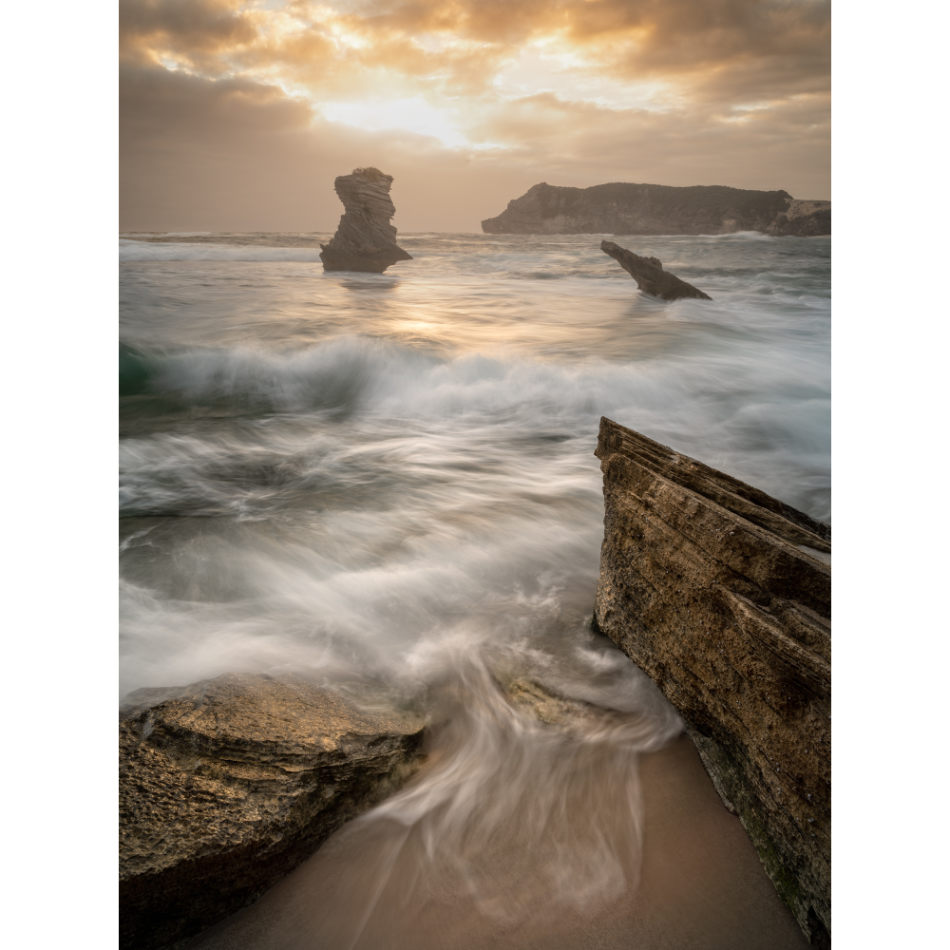Photographers take photos that tell a story.
When I discuss this idea with new photographers, they often need clarification on what to look for and how to find a story for a landscape image.
To discover a story in a landscape, find an aspect of the natural environment that inspires you. Look for a main subject and other elements that reflect the intrinsic beauty of the area. Observe how the light and weather conditions impact the landscape, creating interest and mood for your story.
The concept of a landscape story can be pretty abstract because it doesn’t include people.
A landscape story is about the landscape.
An idea for a story can come from an aspect of the landscape that inspires you.
The challenge is capturing what the landscape looks like and how it made you feel so the viewer can make their own connection.
Both of these aspects should be included in your story!
To capture an image with broad appeal, the photo should tell a story of the landscape that reflects the location’s natural beauty.
A common mistake when searching for a story is getting sidetracked by narratives that require metaphoric or personal interpretation.
This can result in a photo that might have meaning to you, but the viewer may make a different connection due to their symbolic, cultural or personal context.
Let’s look at what makes a compelling landscape story that appeals to a broad audience and what we can do to find these stories in the landscape.
How to Find the Story within a Landscape?
To find a story about the landscape, spend time exploring an area and discover what inspires you about the landscape. Look for features that reveal the landscape’s beauty, ruggedness or uniqueness. Connect with how you feel standing in the location and include elements that reflect this mood or emotion.
To simplify this, we’ll break down the intention of a story in a landscape photo.
We’ll then explore what makes a good narrative so you know what to look for when you’re next on location to find a landscape story easily.

Why Should a Landscape Photo Tell a Story?
A story is the most effective way to share what inspires you about a landscape with the viewer. Through telling a story, you can communicate what a scene looks like and how it feels to stand in the location and help the viewer create a connection with the landscape.
Humans innately tell stories. We have been for thousands and thousands of years.
It’s one of the things that separates us from other animals.
Stories can have words that are written, spoken or sung. However, stories can be told without words, like a piece of music with no lyrics, a painting, or a photo.
Communicating without words is powerful as it transcends language.
Stories are effective ways to share information and are influential tools to create an impact, and that’s exactly what you want to do when you capture a landscape photo.
Before we cover what you can do to find impactful stories, let’s quickly cover what a story of a landscape is.
What is a Landscape Story?
At its core, a landscape story expresses to the audience a perspective of the extraordinary natural environment and provides insight to the viewer into its impact.
Stories are how we share ideas and perspectives and communicate a message.

Making sense of a visual story requires interpretation which can be made at several levels.
Literal interpretation of a story in an image occurs when the audience views part of a landscape for what it is, immediately appreciating its natural beauty and gaining an insight into what it was like standing in front of the scene.
Metaphoric interpretation of a photo is not as straightforward as it contains symbolism or presents meaning figuratively, which can involve cultural background or understanding.
Personal interpretation of a landscape picture involves an individual’s experience within a location, potentially resulting in different meanings for the viewer depending on their prior knowledge and their own experience.
An effective landscape story should be able to be interpreted and appreciated by an audience with minimum personal experience of the area or the reliance on specific symbolic meaning.
The story you choose to capture should be based on an idea that:
- gives some insight into the area,
- shares the character of the location,
- provides a sense of the place, or
- shares a message about the landscape
This idea can simply come down to what inspires you about the location.
The aim of a landscape story is to allow the viewer to appreciate the landscape and gain a sense of what it’s like to visit the location.
…what inspires you about the location?
The more your story doesn’t require metaphoric or personal meaning, instead only needing literal interpretation, the more it will appeal to a wider audience.
What Should You Do to Find a Landscape Story?
It might appear to some people that a good landscape image is pretty, and a story is just about how pretty a location is.
While that’s a good start, as mentioned above, there’s a little more to it.
What to Look for When Finding a Landscape Story?
Fundamental to a landscape story is the landscape itself. Look for prominent features that can be a strong main subject and supporting elements. These are the characters of your story. Look for interactions between these elements and how they relate to each other in the story.
The easiest stories to find are about the main features within the landscape that represent what a location is known for or reflect the area’s splendor.
Examples of these types of main features are mountains, rivers, cliffs, trees, large rock formations, cliffs, islands, and stretches of beaches.

Sometimes the main subject is a well-known feature, like Kirkjufellsfoss in Iceland. Alternatively, it could be a feature with a prominent shape or size, which makes it an obvious main subject within an image.
In addition to a main subject, look for elements with naturally occurring shapes, curves, textures and colors that draw your attention.
When determining which elements to include in the frame and how the elements are arranged in the photo, consider the relationship between the elements and the main subjects and how the viewer may perceive this connection.
Search for interactions between elements that add interest to a landscape picture by either supporting the main subject or providing further context to the scene.
A simple example is waves and water interacting with rocks at the beach. The power you can capture with crashing waves adds dynamic energy to your image.

Another compelling interaction to include is the natural light within a landscape, but we’ll talk about that a little later.
How to Add Feeling to a Landscape Story?
The easiest way to add feeling and emotion to a landscape story is through the image’s color and tone (warm/cold) or by including elements that the viewer can associate with a mood, like dark clouds or bright sunlight.
For your image to impact the audience, it’s not just what they see but, more significantly, how they feel viewing your landscape photo.
Colors are an effective way of providing a feeling through an image. Blue/grey tones are cold and moody, orange and reds are warm and embracing, green is vibrant and new and purples/pinks can signal wonder and excitement.

The light in a scene can play a vital role in building the atmosphere within the location.
The warm light at sunset and sunrise can cast colors of oranges and pinks across the landscape, creating an inviting and sometimes cozy feel to a natural scene.
Brighter light creates tones usually associated with happiness and joy, while darker tones can often mean a more somber or reflective mood.
Light can also be used to highlight elements where the sun’s rays land, whether it’s a patch on a mountain face or the tips of long blades of grass.
Be aware of how the light changes and patiently wait for the right light to hit your scene in a way that draws the viewer’s attention to specific elements in the landscape.

Light can also be used to backlight other elements like rain, mist, or sea spray, dispersing the light and creating a haze effect.
One of the reasons why I prefer to head out to shoot landscapes when the sun is low is the softer and warmer light that is often present and how it’s constantly changing, producing dynamic scenes providing plenty of composition options.
Various weather conditions can also impact the available light, affect the landscape and add interest and emotion to a landscape story.
The period after a storm passes through is when one of my favorite types of light can be found as the sun peaks through the clouds.
Along with the rain and wet conditions, the broken light can be portrayed in an image as new fresh beginnings.
Of course, the storm itself can produce incredible conditions that can be humbling to witness, providing the opportunity to capture unique shots that give the viewer a sense of how it felt to experience.
These natural occurrences can be majestic and create feelings of wonder and amazement within the viewer.
Connect with a Feeling the Viewer can Relate to
It’s often suggested that photographers should connect with how they feel standing in the location.
However, this advice is a little general and can be misinterpreted.
A photographer can feel a range of emotions when standing in a location.
You may feel tired because of the lengths you had to go to your destination or exhausted from a long hike. You could feel excited because this a location you’ve wanted to tick off your bucket list for years, or you maybe be uncomfortable as you’ve endured a rainstorm and you’re wet to the bone.
All of these emotions are real and valid. However, they don’t relate to the landscape itself. They are part of your personal experience and aren’t part of the landscape’s story.
Do you see the difference?
The audience has not been through the same experience, so they can’t be expected to draw out the same meaning.
For example, if you were to include long drooping grass in the foreground and you associated a metaphoric meaning that the grass represented the fatigue you were feeling after a long day in the field, this message would be lost on the audience who has not endured the same experience.
If the grass in the foreground doesn’t add to the story of the landscape or the composition overall, it won’t improve the image, regardless of the meaning it may have to you.

In this image of a seascape sunset, I was very close to the water with my back against a rock cliff. Moments before I captured this shot, a larger wave crashed into me and my camera equipment, damaging my microphone. I felt somewhat deflated because of the experience and was concerned about my lost gear.
However, I set up the camera in the remaining light and tuned into my feelings of inspiration as the sunlight worked its way through the clouds and took the image.
While valid, my emotions of despair were irrelevant to the landscape. The story I tell through the shot is about how the waves interact with the rocks and the light from the setting sun fighting through the clouds.
The viewer doesn’t need to know my struggles and emotions to appreciate the scene I captured.
The key is distinguishing between those feelings directly related to the landscape and the broader emotions you may experience due to other factors.
Spend Time Exploring to Find Better Landscape Stories
An incredible landscape photo has a strong story based on how the location has inspired you.
Exploring the landscape and observing the natural environment is the best way to discover what inspires you.
This takes time!
The more time you take immersed in a landscape, the more you’ll become familiar with elements that appeal to you and how the location makes to feel.
These are the two essential ingredients for your story.
Spending time in an area also allows you to witness the landscape in different light and weather conditions which can generate significantly different feelings and moods.
I can spend hours in a location building up an awareness of an area, but I find it even better to return to a place repeatedly to understand how the landscape changes through different seasons.
This is why locations in your local area can be incredibly valuable, as you can visit these landscapes multiple times, building a better sense of what visually appeals to you and how a place you connect with can make you feel.
QUICK RECAP
Stories are powerful ways to share ideas and effectively create impactful landscape photos.
A landscape story is more than what a landscape looks like, as it includes a sense of how a location feels.
When finding a landscape story, look for features and elements and how they relate and interact.
Add feeling to your landscape story using color, tone, light and elements that can elicit emotion within the viewer.
